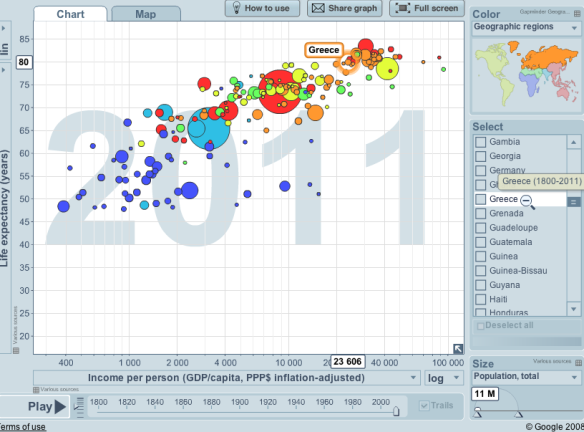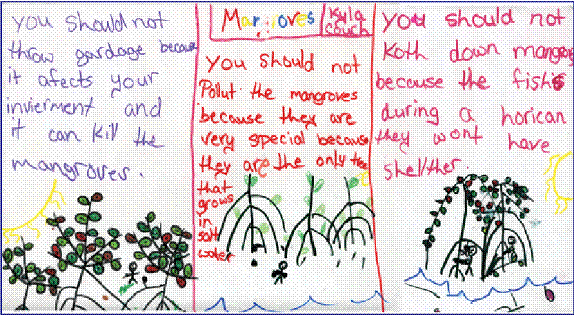Population Growth – Babies
This blog post is going to discuss the world’s most significant environmental problem, the population growth and how it is related with the natural resources. In addition, it will present some information concerning the two different perspectives on this issue, the Cornucipians’ and the Cassandras’, and their suggestions and beliefs accordingly.
World’s Population Growth (AD1 – 2000)
To begin with, I would like to state that the world population has reached the number of seven billion people, and this number tend to increase as the years go by. There are several reasons contributing to this amazing growth; the most important reason is the increased high birth and low death rates. In addition, technology and science advantages play an important role on the population growth, since medicine innovations developed so that people stop being infected by dangerous diseases. Moreover, as the world’s population number tend to increase, the resources being used are increasing as well; because of the high urbanization, the more the recourses are used, the less the life of our planet is. (Withgott and Brennan)
Urbanisation
As a consequence, we all think about which the carrying capacity of our planet is. In other words, which is the highest population size of a given species that an area can support without reducing its ability its ability to support the same species in the future. Consequently, there are some supporting that population growth is not such a problem, whereas some others insist that it is the number one environmental problem.
Such categories of people people are the Cornucopians and the Cassandras; those teams tend to have a debate concerning population growth. Cornucopians tend to believe that the increasing number of population in our planet is not such a curse, since science and technology will eventually find ways to solve the problem. In other words, they believe that the resources will never end since people will find out more alternative sources to get what they need from.
Om the other hand, Cassandras insist that the resources will finally end if we keep on exploiting them at this rate, and the end of the world is closer from what we think it is.
Optimism & Pessimism.
My opinion concerning this issue is that even if we already consume and exploit resources at a higher rate than we are allowed to, since the world’s ecological footprint is bigger than what the planet can handle, we will find a way to survive. If the “catastrophe” comes closer to our life, we will change our behavior and will find ways to live in the planet. But we all have to understand our environment, in order to take quick actions before it’s to late.
Paul Enrich, as presented in the video above, is an American biologist and Professor of Population Studies at Stanford University. He wrote the book: “The Population Bomb”, and became famous from that, since he predicted a mass starvation of humans in the 1970’s and the 1980’s, due to overpopulation. Ehrlich suggested that quick action should be taken so that the population growth to be limited.
Paul Ehrlich is also famous for the creation od IPAT equation, which is a formula used to describe the impact of human activity on the environment. Specifically, human impact (I) on the environment equals the product of Population (P), Affluence (A) and the Technology (T). In other words, the equation describes how these 3 factors influence the environment (environmental impact).
IPAT Equation
If we apply this equation to several countries, we will find out that each country has a different environmental impact. For example, if we take a look at US’s IPAT, which is a developed country with a great technology, we will see that the Affluence rates are pretty high. Also, due to the improved technology and science, people’s birth rates tend to continuously increase, and, consequently, we can understand that the US have an extremely big impact on the environment.
If we consider China, we can see that there is a remarkable lower affluence rate than the one of the US’s. This is due to the fact that Chinese tend to use fewer resources that Americans do; it is proven from their low Ecological Footprint score, as we can see from the image below. In addition, Chinese have taken actions for the population decrease; yet, the Population and the Technology is high, so the China’s IPAT result is high as well, but much lower than the US’s one.
Ecological Footprint of several Countries
Greece’s IPAT scores are small when compared to US’s or/and China’s, since we are not that technological developed as a country. In addition, my country is not that over-populated, so the Population score is also low. The only measurement which is slightly high is the Affluence one, since we, as a country, have a high per capita resource use.
Hans Rosling is professor of International Health at the Karolinska Institutet, the medical university in Stockholm, Sweden. He discovered konzo, a formerly unknown paralytic disease caused by malnutrition and intoxication. He has also studied other links between poverty and health in Asia and Latin America and been an adviser regarding vaccination and essential drugs to WHO, UNICEF and Sida. Besides pioneering global health teaching in schools and colleges, training and recently published “GLOBAL HEALTH, an introductory textbook”, he also co-founded Gapminder (www.gapminder.org), a non-profit venture for development of software that unveils the beauty of statistics by converting numbers into moving and interactive graphics. (Rosling)
In this video, we understand that Rosling is definitely an optimistic and ambitious person, since he tries to emphasize that we can still make changes and provide a better future for the next generations. In his lecture he clearly shows the difference between different places of the world and the evolution among the years. It is rather alarming to see which the expectations used to be and how they transformed through the years. It is also remarkable to mention the change of the death rates and I believe that we should all be disturbed by the picture presented in the 3rd world countries. His graphs are, inevitably, very significant for everyone to consider. Taking as standard his optimism, I truly wish that the future takes the path that Curnocopian Rosling suggests, even if believe that what he says is difficult to be succeeded.
Taking under consideration Gapminder’s charts, we can understand that the life expectancy in the world has increased dramatically over the last century. The story is exactly the same with my country, Greece, where the life expectancy increased as well; this change is due to the science and technology improvement. Specifically, the field of medicines and generally the health section has had incredible innovations, and, as a result, the quality of life has been improved.
To conclude, I do believe that that population growth is, really, the number one environmental problem, since the population has reached the outstanding number of 7 billion. There are both positive and negative predictions, but the future depends upon our own choices. We should take quick, drastic action in order to solve the population growth problem, before the natural resources eventually end. If we do not, we are doomed to suffer the consequences of the catastrophe; that is a real fact, since the world’s ecological footprint is higher than what our planet can support.
Work Cited
Ecological Footprint of several Countries. Digital image. Geo-mexico.com. N.p., n.d. Web. 20 May 2013. <http://geo-mexico.com/?p=345>.
Hans Rosling: Let My Dataset Change Your Mindset. Perf. Hans Rosling. Ted.com, 2009.
Hussain, Tariq. Population Growth – Babies. Digital image. Http://tariq-feature.blogspot.gr/. N.p., 3 Sept. 2012. Web. 20 May 2013. <http://tariq-feature.blogspot.gr/2012/09/surge-in-population-growth-rate-stir.html>.
IPAT Equation. Digital image. Our-future.nl. N.p., n.d. Web. 20 May 2013. <http://our-future.nl/introduction/humanities-impact/>.
Urbanisation. Digital image. Aurecongroup.com/. N.p., n.d. Web. 20 May 2013. <http://www.aurecongroup.com/en/thinking/themes/urbanisation.aspx>.
Rajesh, Setty. Optimism & Pessimism. Digital image. http://www.rajeshsetty.com/. N.p., n.d. Web. 20 May 2013. <http://www.rajeshsetty.com/2008/09/15/optimists-and-pessimists-the-big-difference-is/>.
Rosling, Hans – Biography. Hans Rosling – Biography. N.p., n.d. Web. 22 Nov. 2012.<http://www.worldcongress.com/speakerBio.cfm?speakerID=2163>.
Seven Billion of Us: Paul Ehrlich Speaks to SBS. Perf. Paul Ehrlich. Youtube.com, 2011.
Withgott, J. & Brennan, S. (2010). Environment: The science behind the stories. 4th Ed. San Francisco: Pearson Education.
World’s Population Growth (AD1 – 2000). Digital image. Biblehelp.org. N.p., n.d. Web. 20 May 2013. <http://www.biblehelp.org/mortality.htm>.



































